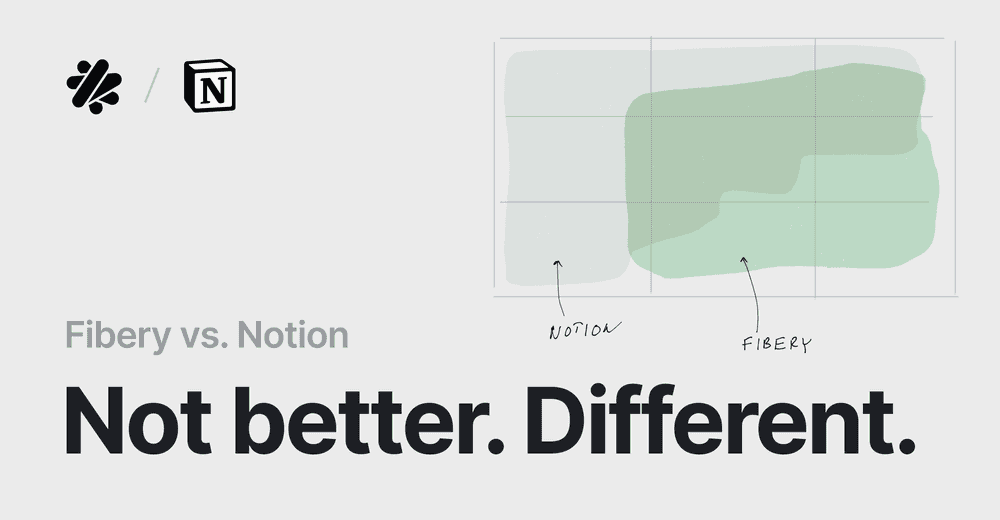Shape Up with Fibery
We’ve just released a new template for developing products using the ‘shape up’ methodology.
Find it here, or add it directly to your workspace from the Templates gallery
Shape → Bet → Build
‘Shape up’ is a product development approach from Ryan Singer (of Basecamp) that aims to help teams ship faster 🏃♂️
It’s based on the concept of “fixed time, variable scope” bets, where development teams are tasked with working on a selected project for a fixed period. When you know that you only have 6 weeks to work on something, it’s easier to focus on the must-haves, and only delivering on the nice-to-haves if everything goes to plan (which it never does 😕).
In order to ensure the development team deliver what is needed, it’s a product manager’s job is to take some rough’n’ready ideas and shape them into a form that will allow the build cycle to be as productive as possible. This means defining clearly what the problem to be solved is, whilst not overly constraining the details of implementation. This is the ‘shaping’ process from which the methodology gets its name.
Any ideas that have been suitably ‘shaped’ can be pitched at a ‘betting table’ ♠♦♣♥ a meeting where the pitched projects are discussed and evaluated, before one is chosen to be taken forward in the next build cycle 🥇 (and others are rejected) 🚽
Overall, it can be viewed as steps in a funneling process whereby a bunch of ideas get fed in and a completed project comes out of the other end (or if you’re unlucky, an incomplete project is delivered 😧 ).

Shaping, betting, building
Cycle timing
In terms of timing, the shaping process is actually happening while the previous build cycle is underway, so the timeline is something like this.

Back in the mix
If a project does not make it all the way through the funnel to completion, it’s perfectly acceptable to put it back into the pile of ideas so that it can be (re-)shaped and compete for attention with any other projects that you might want to work on.
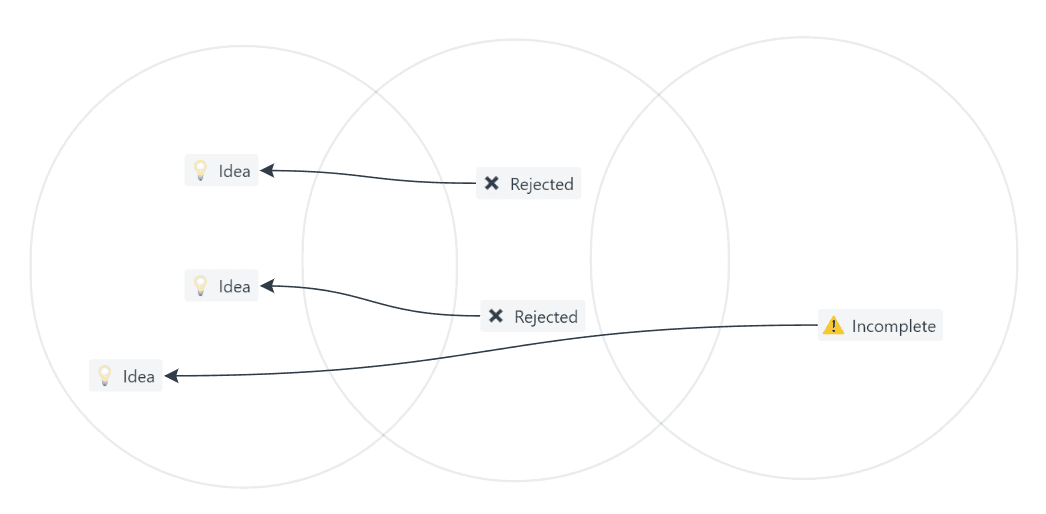
In this way, there is no ‘backlog’. A backlog gives a feeling like you’re always behind even though you’re not. With ‘shape up’, no time is spent on grooming and organizing things that might not get worked on in the next 6 months (or ever!) 🥴
Instead, the focus is on shaping an idea into something meaningful, and then letting it compete against other projects for the limited time and attention of the development team.
Pitches
The content of a pitch is fairly well-defined:
-
Problem — The raw idea, a use case, or something we’ve seen that motivates us to work on this
-
Appetite — How much time we want to spend and how that constrains the solution
-
Solution — The core elements we came up with, presented in a form that’s easy for people to immediately understand
-
Rabbit holes — Details about the solution worth calling out to avoid problems
-
No-gos — Anything specifically excluded from the concept: functionality or use cases we intentionally aren’t covering to fit the appetite or make the problem tractable
There’s not much point in elaborating on these here, you can read all about it but the ‘appetite’ is worth touching upon 🍕
It is a way of defining how important the project is. If you don’t think that an idea deserves the whole 6 weeks of development time, you can set the appetite to ‘small’. This is saying that it should not be worked on for more than 2 weeks. In this way, 3 small projects could be packed into a single build cycle.

The Fibery template
The Fibery ‘shape up’ template has databases for Products and their related Projects. Each Project is further broken down into Scopes and To-dos. There are also databases for the Betting and Build Cycles to which a Project could be allocated (as a pitch or a bet).
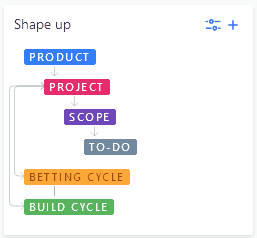
The template has three major left-menu sections, one for each phase of the shape up process.
Within these folders are ‘smart folders’. Smart folders are a special feature of Fibery that in this case, really allow you to only focus on what matters 🔍 something that the ‘shape up’ methodology emphasizes.

Shaping
For Shaping, there is a smart folder filtered to show all Projects that have not been completed, nested under their respective Product area.
In this way, a Product owner can quickly get an overview of the possible Projects he/she might want to be shaping and pitching.
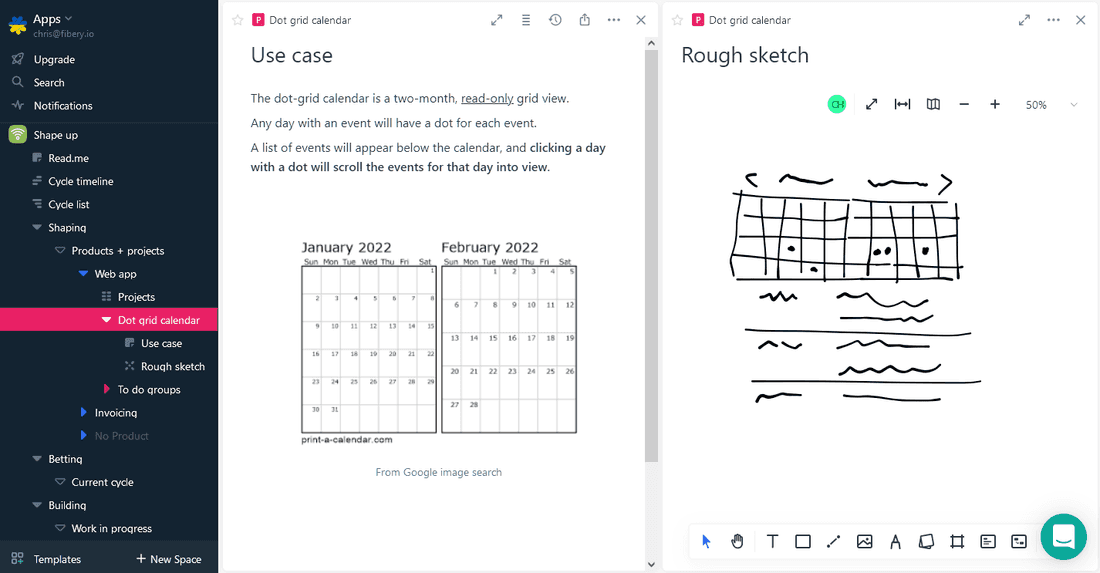
Betting
For Betting, there is a smart folder, that is only populated during the period of a betting cycle.
It contains a ‘Pitches’ feed view of all projects that are currently being pitched. Prior to the betting table meeting, attendees can review this list to see which projects are up for selection.
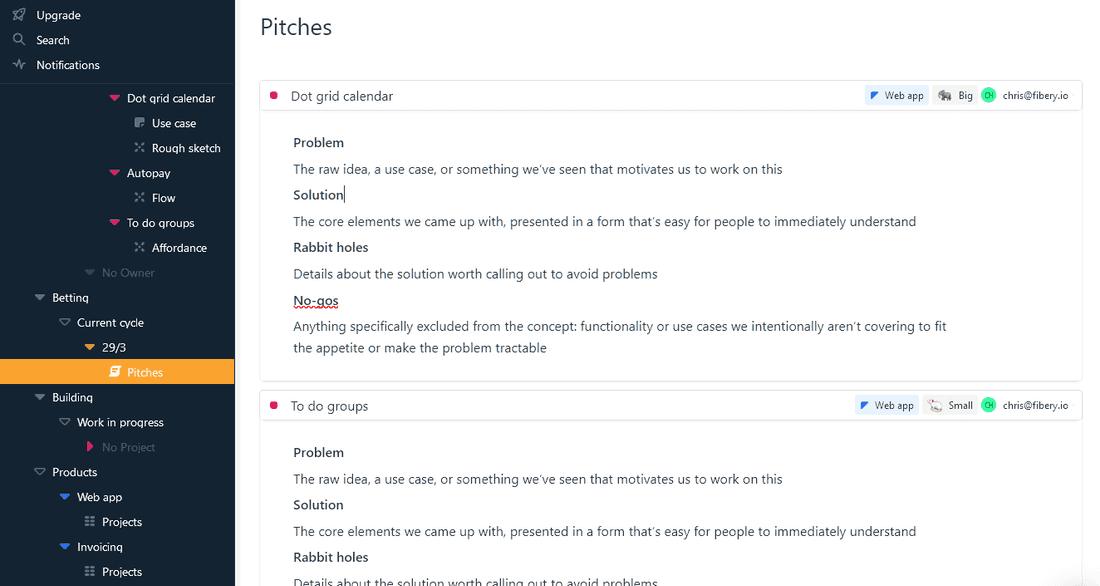
Building
For Building, there is a smart folder, that is populated with the project(s) that have been bet on for the current build cycle.
For the development team(s) this eliminates any distractions, whilst also allowing project/product managers to monitor progress.


If all of this sounds intriguing, why not try Fibery and give the Shape Up template a go.

We’re here to help if you need it, and are open to feedback if you think it could be improved 👂
Psst... Wanna try Fibery? 👀
Infinitely flexible product discovery & development platform.
